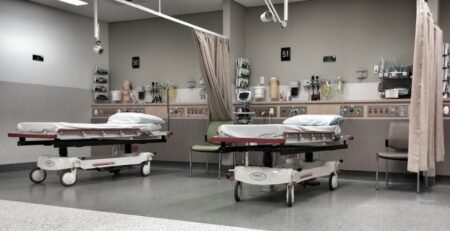How To Plan Expansion Of Your Hospital
admin2022-01-07T11:34:47+00:00Every major hospital has expansion plans these days to tap into the relatively unexplored market in Indian healthcare. This results in people getting better access to healthcare even in Tier II & Tier III towns. Now, the focus of the major hospitals has turned to smaller towns to cater to the large semi urban population that largely depends on the nearest metro or major city for all its specialised services.
If you are planning for expansion of your hospital business by taking over some Brownfield projects/going for Greenfield projects, you should be aware of the fact that it requires a strong backing of the investors & justify the investment of the project. If it is done by a single promoter or a group of doctors, one or more of them need to have a risk taking profile/capability in order to venture into this line.
A desire to keep facility modern and competitive & deciding whether to renovate an existing facility or to build a replacement is a challenging, but not impossible decision for hospitals to make. As the healthcare industry becomes more and more complex, strategic planning is the hallmark of strong organizations contemplating whether to renovate or replace their facilities. Additional space is needed to accommodate this growing number of patients & also make room for improvements to the existing facility.
We may look at the word ‘Expansion’ not just to increasing your hospital presence in different regions but also to expand in the same premises by acquiring the land adjacent to the existing hospital thereby increasing the total bed capacity. Let’s discuss both these aspects here.
So…What makes you think of expanding your existing hospital?
- Is it the lack of number of beds? Lack of services? Lack of waiting area? Need for Up-gradation & renovation? Unable to survive competition? The reason could be any or many more. But the point is, Is it really necessary?
- There are times when the hospital goes through a period when it receives a higher number of patients in a certain season & other times there is no occupancy. How do you justify expansion of the hospital in such case?
- What I am trying to say here is, if an expansion strategy has worked for the neighbouring hospital it isn’t necessary it should work for you too. Although, you might be working in a same locality, the services might be different & the brand value might be entirely different. Plan your hospital expansion carefully. An alternative of this could be that you might think of setting up another hospital (Mid size) in a different catchment area rather than expanding in the existing premises.
- Expansion Project should always include a major expansion of existing services to meet increasing demand and the creation of new services to reduce the need for the people to travel out of the area for treatment. To make sure you get it right, talk to staff, patients, carers and the community about how you can improve the hospital experience. Listen to what people want. Based on suggestions from patients and carers, you could introduce new ways to help reduce stress and create a more relaxed environment in the hospital. This approach will give you better rewards from patients & all other stakeholders.
- To address the significant increase in patient volumes and congestion it’s seen in recent years, a multiphase multi-year redevelopment of the hospital is proposed to increase its capacity.
- Redevelopment will allow the hospital to provide the latest in-patient-centred care and design, enhance
the working environment for clinicians and employees, and provide a significant increase in healthcare
services and capacity for the communities served. Expansion or renovation typically depends on the
actual needs which could be:
- New Critical care departments
- New Diagnostic departments
- New and larger Trauma care/Emergency department
- New operating rooms
- Up-gradation of existing spaces
- Executive rooms/Suites
Renovate versus Replace versus Setting up a new centre in a peripheral location:
The way forward – Early involvement adds value
This is where a highly knowledgeable, experienced team/Project consultant on board early can reap the greatest benefits. The right team can help find efficiencies & preserve capital by setting up the most effective plan for you business. Renovating and building new hospitals are expensive ventures, and in most instances, they are necessary. Hospitals like other forms of property, age and need the occasional tune-up or a full-scale reconstruction to stay competitive within their market and state. Forecasting future needs. One of the most highly criticized aspects of renovating or building new hospital facilities comes in the form of this question: “How do you know you won’t need to do more construction in the future?” To meet goals of improved quality and reduced costs in today’s changing healthcare environment, hospitals are being forced to be creative and flexible in their strategies.
Strategy for Survival vs. strategy for continued Growth:
Strategy for Survival vs. strategy for continued Growth Some hospitals are merging with larger healthcare systems out of a need for survival, after having suffered steep revenue loss & shrinking patient volume. These hospitals may need to close if they don’t find a partner, so they pursue a merger as a strategy for gaining capital and at the same time continue to offer their services. For larger hospitals and health systems, mergers and acquisitions are a strategy to increase market share, improve quality, gain efficiencies and reduce costs by eliminating unnecessary duplicated services. For these institutions, a merger or acquisition expands their reach in the community, giving them access to more population.
What could work for you?
You may think of following an asset-light strategy to increase your presence in different locations or regions. While you may own a few hospitals, the other centres could be taken on lease. This way, your building cost will decrease & project can become operational in a short time. Interestingly, many multi-specialty hospital chains are already looking this asset-light model to increase their reach with limited capital expenditure.





Leave a Reply